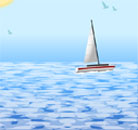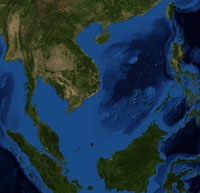  Fun Sea Facts for Kids Fun Sea Facts for Kids
Check out these fun sea facts for kids. Learn more about the many seas of the world. Enjoy a range of interesting facts about seas found within the five great oceans, different types of seas, how water circulates in seas, the differing levels of salt content in seas, and much more. | | |
In geographic terms (and for this page), "sea" is used in the name of specific, smaller bodies of seawater. Seas of the world usually make up partly landlocked areas within the much larger five great oceans.
Marginal seas of the Arctic Ocean include: Barents Sea, Beaufort Sea, Chukchi Sea, Kara Sea and Laptev Sea. Some marginal seas of the Southern Ocean include: Amundsen Sea, Ross Sea, and Weddell Sea.
Some marginal seas of the Atlantic Ocean include: the Argentine Sea, English Channel, Gulf of Mexico, Hudson Bay, Irish Sea, North Sea, and Norwegian Sea.
Pacific Ocean marginal seas include: the Bering Sea, Celebes Sea, Coral Sea, East and South China Seas, Philippine Sea, Japan Sea, Sea of Okhotsk, Tasman Sea and the Yellow Sea.
A mediterranean sea, is a sea that is nearly completely enclosed by land and therefore has a very limited exchange of water with the outer oceans. Water circulation within these seas is often dependent on changed salinity (salt content) and temperature levels rather than open ocean trade winds and currents.
Confusingly, the Mediterranean Sea is a type of mediterranean sea and within it are marginal seas such as: the Adriatic Sea, Aegean Sea, Alboran Sea, Balearic Sea, Ionian Sea, Ligurian Sea, and the Tyrrhenian Sea.
Brackish seas are waters that have higher levels of salinity than freshwater but lower levels than seawater, including the Baltic Sea, the Black Sea and the Caspian Sea (technically an inland saltwater lake).
|

|
|